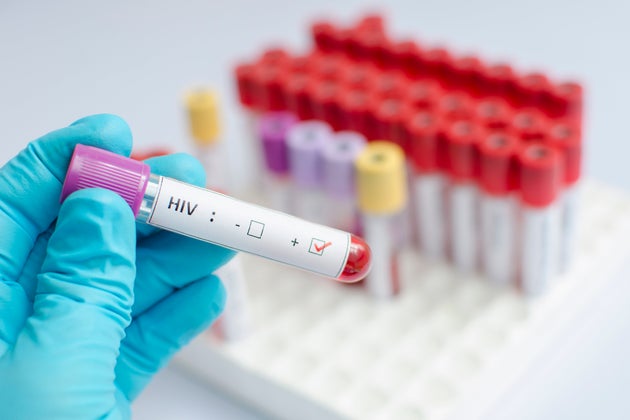A Promising Study Reveals New Hope For An HIV Cure
- Author:
- Huffingtonpost.com

JARUN011 VIA GETTY IMAGES
A new experimental HIV vaccine, when combined with a compound that stimulates a person’s immune system, demonstrated potential for a path to curing HIV.
The small study, involving rhesus monkeys who had the monkey equivalent of HIV, revealed that this novel combination was effective at suppressing the virus to undetectable levels in a few of the subjects, without the need for antiretroviral treatments.
If the combination of the HIV vaccine and immune system compound is shown to be effective in people, it could mean one step toward a cure for HIV, said lead investigator Dan Barouch, director for the Center for Virology and Vaccine Research at Beth Israel Deaconess Medical Center and Harvard Medical School.
These days, people with HIV can thrive thanks to antiretroviral therapy, a treatment that keeps the levels of virus low so that people can live healthy lives and decrease their risk of passing it on to others.
The only problem with ART? It’s a treatment, not a cure. It has to be taken every day in order to work, and if you stop taking the medication, the virus can bounce back to dangerous levels. This is because, while ART can suppress HIV to undetectable levels, the virus can actually hide in reservoirs throughout the body, waiting for an opportunity to return in force. One way to cure HIV, the thinking goes, would be to suppress HIV levels without the need for ART ― what Barouch called a “functional” cure.
To see whether an experimental HIV vaccine, an immune system stimulant or a combination of the two would best achieve viral suppression without ART, Barouch first infected 36 monkeys with simian immunodeficiency virus and then started treating them with ART to suppress levels of the virus. After six months of ART, Barouch divided the monkeys into four groups: The first received the vaccine alone, the second received the immune system compound, the third group was given a combination of the two and the fourth group received a placebo.
Then they stopped the monkeys’ ART.
Scientists observed that in most monkeys the virus rebounded. However, among the monkeys who received a combination of both the vaccine and the immune system booster, the return of the virus took 2.5 times longer than the other groups’ viral rebounds. The combination-therapy monkeys also had a 50-fold lower amount of virus in the bloodstream compared with the other groups. Finally, the most promising result: three out of nine of these combination monkeys had undetectable levels of the virus in their bodies, as if they were still on ART.
“If all the animals went undetectable in the absence of [ART], that would have been a home run,” said Barouch. “I would say that what we achieved was a solid base hit, and it’s something that we can work from.”
Barouch hopes to test this combination approach in human beings who already have HIV but isn’t sure how long it’ll take to get a trial going. However, both of the components are already being tested separately in human trials by the pharmaceutical companies that manufacture them. Johnson & Johnson makes the experimental HIV vaccine, while Gilead Sciences Inc. makes the immune system stimulant.
“We do see this as an advance in terms of increasing our understanding of the ability of vaccines or innate immune stimulators to provide antiviral effects,” Barouch concluded. “We hope the results in humans will allow us to continue to improve this strategy.”
While Barouch and other HIV scientists continue to work on a functional cure for HIV, it’s important to note that not everybody is taking advantage of lifesaving ART medicine. According to a 2011 report, only 37 percent of the estimated 1.2 million Americans living with HIV have been prescribed ART, a rate that is lower than the most recent global figures. Worldwide, an estimated 46 percent of people with HIVgained access to ART by the end of 2015, as more countries have adopted World Health Organization recommendations to start treating people with the virus immediately. WHO hopes that getting ART in the hands of 90 percent of people with HIV, as well as combating HIV-related stigma and discrimination, will one day end the global AIDS epidemic.
Barouch’s study was published in the journal Nature.







